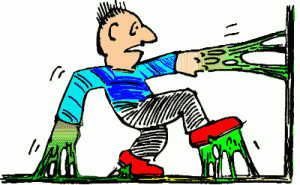STRENGTH PREDICTION OF ADEHSIVELY BONDED JOINTS: STILL A CHALLENGE
March 24, 2014
 Note: Besides our focus on business technology, Sogeti also has a distinct and unique expertise in the area of High Tech and design. A blog post from this side of our company details the progress in analyzing bonded joints:
Note: Besides our focus on business technology, Sogeti also has a distinct and unique expertise in the area of High Tech and design. A blog post from this side of our company details the progress in analyzing bonded joints:
In 2013, Weißgraber and Becker wrote « up to now the failure load assessment of bonded joints is still not fully understood » [1]. In other words, the strength prediction of adhesively bonding joints remains a challenge.more–>
Benefit from Adhesive Bonding
In the frame of the structural component design, adhesive bonding can be considered as a suitable assembly method or an attractive complement to conventional methods such as bolting or riveting, assuming the industrial process for bonding is controlled. Bonding offers the possibility of joining without damaging various materials, like plastics or metals, thus allowing for various combinations of materials. This first advantage is reinforced by a large choice of adhesive families and by the possibility to formulate adhesives, designed to best meet the joint specifications, while optimizing the structure. Finally, bonding allows mainly for weight benefits as compared with other mechanical fastening methods, since the amount of adhesive required is very low to sustain static or fatigue loads.
To take advantage of adhesive bonding, accurate strength predictions are thus required.
Approaches for Strength Prediction
The stress analysis of bonded joints can be addressed thanks to the Finite Element Method, or thanks to simplified (semi-)analytical approaches, in order to provide input data to compute suitable strength criteria. The question to be answered by the designer concerns the approach to employ for both the choice of the suitable criteria associated to the experimental characterization of relevant allowable. The strength prediction needs to consist of both of allowable, characterized by experiments, and of calibrated criteria, computed by simulation. Four approaches can be distinguished for the strength prediction of bonded joints.
The stress analysis approach, based on the Strength of Materials, is the classical approach. It aims at providing the distributions of stresses and strains, and, in particular, the locus and value of maximal stresses and strains. A more recent approach is based on the Fracture Mechanics. Assuming the presence of an initial crack judiciously localized and sized by the user, it allows for the computation strain energy release rates, toughness or J-integral parameters at crack tip, allowing the crack to propagate. The coupled criterion is a recent approach, which makes use of both Strength of Materials and of Finite Fracture Mechanics, to provide the force and the crack length at initiation. It is based on an energy balance between before the crack growth and after it, which is related to the stress concentration condition.
The Cohesive Zone Model, based on Damage Mechanics, enables a diagnostic of the current damage state and an update of the strength prediction. The damage, associated to micro-cracks or voids, results in a progressive degradation of material stiffness before failure. The damage initiation is automatically localized thanks to the use of Strength of Material approaches, while the damage propagation is controlled through Fracture Mechanics concepts, without assuming any initial cracks. Another advantage of CZM-based approach for the strength prediction of bonded joints comes from the fact that the required experimental characterization investigates directly the mechanical behavior of the adhesive thin layer, such as employed in the final bonded joints. The CZM-based approach appears then as an attractive one, since it covers both Strength of Material and Fracture Mechanics approaches, while including the characterization of non-linear adhesive material behavior as input data.
[1] P. Weißgraber, W. Becker. Finite Fracture Mechanics model for mixed mode fracture in adhesive joints. Preprint submitted to International Journal of Solids and Structures (Accepted Manuscript) 26th of March 2013
Image source: http://aluminium.matter.org.uk/content/media/images/joinAdhesedMan.gif

 English | EN
English | EN 